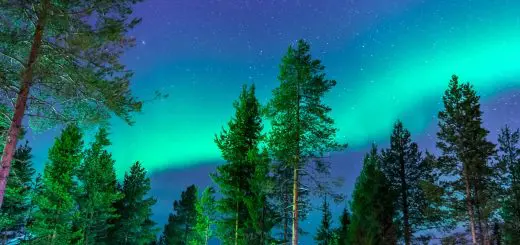Whats a Shaman: Understanding the Role of a Spiritual Guide

Looking for more amazing products? Check out our online store and explore our collection here! Happy shopping!
Before diving in, please note: This post is for informational purposes only. If you’d like to know more about how we approach topics, feel free to check out our friendly Disclaimer Page.
Hey there, amazing readers! 
We’re committed to delivering quality posts, and your support (even just sticking around despite the ads) means everything to us. So, bear with us, and thanks for helping us keep the good vibes rolling. Now, on to the fun stuff!
TRANSLATE BUTTON AT THE END OF THE ARTICLE
A Quick Overview
Have you ever sought guidance during tough times and heard whispers of shamans?
Maybe you’ve wondered, “What’s a shaman?” Well, you’re in the right place!
A shaman is often seen as a spiritual guide, a healer, or even a bridge between our world and the spiritual realms.
This article is a heartfelt exploration of shamanism, shedding light on what makes a shaman tick, their historical roots, and how they help individuals and communities thrive.
What Is a Shaman? An Overview of Spiritual Practice
So, what exactly is a shaman?
At its core, shamanism is an ancient practice rooted in spiritual healing and guidance.
Shamans serve as intermediaries, connecting the physical world with spiritual dimensions.
They often engage in rituals, ceremonies, and practices that foster healing and insight, both for themselves and the people they guide.
A shaman is not just a healer but also a storyteller, a leader, and a community member.
They possess a keen ability to interpret signs and symbols from the spiritual realm, often using altered states of consciousness to tap into their intuition.
This could involve drumming, dancing, meditation, or even consuming sacred plants.
One of the most beautiful aspects of shamanism is its adaptability.
While the core principles remain, shamans may incorporate elements from different cultures and traditions, making each shaman’s practice unique in its expression.
Shamans are often sought after during times of crisis, be it physical, emotional, or spiritual.
They help individuals navigate life’s challenges, offering wisdom and support in a world that sometimes feels overwhelming.
Whether it’s through a healing ceremony or a personal consultation, a shaman’s role is profoundly impactful.
The Historical Roots of Shamanism Around the World
Shamanism has been around for thousands of years, with roots in various cultures across continents.
From the indigenous tribes of North America to the Sami people of Northern Europe and the tribal communities of Africa, shamanic practices exhibit rich diversity.
In Siberia, the term "shaman" originates from the Evenki language, meaning "one who knows." These early shamans would enter trance states to connect with spirits, seeking guidance for their tribes.
This connection to the spiritual world forms a foundational aspect of shamanism globally.
In the Americas, shamans played vital roles in community well-being, often presiding over rituals and healing practices.
They were the guardians of traditional knowledge, passing down stories and wisdom through generations.
Meanwhile, in the Amazon, shamans utilize plant medicine to heal ailments and provide spiritual insights.
The Ayahuasca ceremonies, led by shamans, have garnered global attention, attracting individuals seeking profound transformation.
Across different cultures, the consistent thread is the shaman’s role in maintaining harmony within the community.
They serve as a compass, guiding individuals through life’s trials and connecting them to something greater than themselves.
Key Qualities That Define a Shamanic Practitioner
Shamans often possess specific qualities that set them apart as spiritual guides.
Here are a few key traits:
Intuition: A strong sense of instinct is crucial.
Shamans tap into their intuition to guide others, often feeling energies and emotions that are invisible to most.
Empathy: Shamans typically have an innate ability to connect with others’ feelings.
This allows them to understand what someone might be going through, providing a compassionate ear and wise counsel.
Wisdom: Many shamans have extensive knowledge of nature, traditional healing methods, and spiritual practices.
They draw upon this wisdom to help individuals navigate their journeys.
Courage: Embracing the unknown can be daunting.
Shamans often confront their fears and embrace challenges head-on for the sake of their communities.
Dedication to Spiritual Growth: Shamans are lifelong learners.
They engage in continuous self-development, often seeking new experiences and insights to enhance their practice.
These qualities enable shamans to serve effectively as spiritual guides, aiding individuals in their quests for healing and understanding.
How Shamans Serve as Spiritual Guides for Communities
Shamans hold a significant role in their communities.
They often act as spiritual leaders, offering guidance during challenging times.
Imagine a community facing a drought; a shaman might be called to perform a rain ceremony, invoking spirits to bring life-giving water.
In addition to their roles in ceremonies, shamans often provide individual counsel.
When someone struggles with emotional pain or confusion, they may turn to a shaman for support.
By guiding them through spiritual practices or offering insights, shamans help individuals gain clarity and direction.
Shamans also foster a sense of belonging in their communities.
Through rituals, they gather people together, reinforcing social bonds and shared beliefs.
This creates a safe space for individuals to express themselves, share their stories, and find solace in their shared experiences.
Another aspect of a shaman’s role involves education.
Many shamans actively share their knowledge about plants, healing techniques, and spiritual practices.
They pass down traditions to the younger generation, ensuring the continuity of cultural heritage.
Through their multifaceted roles, shamans serve as anchors in their communities, providing support, wisdom, and connection.
The Role of Rituals and Ceremonies in Shamanism
Rituals and ceremonies are at the heart of shamanic practices.
These sacred acts create a space where the physical and spiritual worlds intersect.
Shamanic rituals often involve the use of drums, chants, and offerings to connect with spirits.
Drumming, for example, can induce trance states, allowing the shaman to journey into the spirit world.
These journeys can reveal insights, healing, or guidance for their community.
Ceremonies can also celebrate significant life events, such as births, marriages, or transitions into adulthood.
They create a framework for communal support and connection, reinforcing cultural values.
Additionally, rituals often signify a shift in energy.
For instance, a cleansing ceremony may be performed to release negative energies and invite positive transformations.
These practices help individuals connect with their spiritual selves and navigate life’s challenges with a renewed sense of purpose.
Journeying: A Shaman’s Path to Spiritual Insight
Journeying is a quintessential practice in shamanism.
It involves entering an altered state of consciousness to connect with the spiritual realm.
During a journey, a shaman might use techniques such as drumming, rattling, or meditation to facilitate this process.
In this altered state, shamans travel to different spiritual dimensions.
They may encounter spirit guides, ancestors, or other beings who provide insights and wisdom.
Each journey is unique, tailored to the specific needs of the individual or community seeking guidance.
The experiences gained during these journeys can be profound.
They can reveal hidden truths, provide clarity on complex issues, or offer healing for emotional wounds.
For many, these journeys foster a deep connection with the spiritual world, enhancing their understanding of life.
Through journeying, shamans serve as conduits for wisdom, helping individuals tap into resources that lie beyond the physical realm.
Understanding Spirit Animals: Guides and Protectors
A key element of shamanism involves the concept of spirit animals or animal totems.
These are believed to be spiritual guides that help individuals navigate their life paths.
Each person may resonate with a specific animal that embodies qualities they need to embrace.
For instance, a wolf might represent loyalty and strength, while a butterfly could symbolize transformation and growth.
Shamans often help individuals identify their spirit animals through ceremonies or personal exploration.
The relationship with a spirit animal can be transformative.
It serves as a source of guidance, protection, and insight.
When individuals connect with their spirit animals, they often gain a deeper understanding of themselves and their purpose.
Shamans encourage people to honor these connections, reminding them that spirit animals can offer support during challenging times.
Whether through meditation or ritual, tapping into the wisdom of spirit animals can enhance one’s spiritual journey.
Healing Practices: How Shamans Promote Well-Being
Healing is a cornerstone of shamanic practice.
Shamans often employ various techniques to promote physical, emotional, and spiritual well-being.
One common method is energy healing.
Shamans believe that emotional or physical ailments arise from energetic blockages.
By using techniques like drumming, chanting, or hands-on healing, shamans work to restore balance and harmony in the body.
Plant medicine is another vital tool.
Shamans may use herbal remedies or sacred plants to facilitate healing.
These plants often hold deep spiritual significance and are used in rituals to connect with healing energies.
Shamans also emphasize the importance of personal responsibility in healing.
They empower individuals to take an active role in their well-being.
This could involve self-reflection, embracing change, or seeking support from the community.
Through their healing practices, shamans guide individuals toward wholeness, fostering a sense of well-being and connection to something greater.
The Power of Nature in Shamanic Healing Traditions
Nature plays an integral role in shamanic practices.
Shamans often draw inspiration from natural elements, believing that everything holds spiritual significance.
Forests, rivers, mountains, and animals are seen as manifestations of spirit.
Shamans may conduct ceremonies in nature, honoring the elements and seeking guidance from the natural world.
Nature serves as a powerful teacher.
Shamans often encourage individuals to connect with their surroundings, inviting them to notice the beauty and wisdom present in their environment.
Whether it’s listening to the rustle of leaves or observing animal behavior, nature provides valuable lessons.
Moreover, many healing practices incorporate natural elements.
Herbs, stones, and other materials are used in rituals to harness their healing properties.
This reinforces the belief that nature is an ally in the journey towards wellness.
By embracing the power of nature, shamans help individuals reconnect with the earth, fostering a sense of balance and harmony in their lives.
Modern Shamanism: Blending Ancient and Contemporary Ways
As the world evolves, so does shamanism.
Many shamans today blend traditional practices with contemporary insights.
This fusion creates a dynamic approach that resonates with modern seekers.
Shamanic practices are increasingly recognized in therapeutic settings.
Some therapists incorporate shamanic elements into their work, offering holistic approaches to healing.
Moreover, the rise of spiritual tourism has introduced shamanic practices to a broader audience.
Individuals travel to experience ceremonies, healings, and retreats that honor ancient traditions while promoting personal growth.
This modern interpretation keeps the essence of shamanism alive while making it accessible to those who seek it.
It invites individuals to explore their spirituality and connect with ancient wisdom in a way that feels relevant to their lives.
How to Find a Qualified Shamanic Practitioner
Choosing a shamanic practitioner is an important step, especially if you’re seeking guidance or healing.
Here are some tips to help you find a qualified shaman:
Research: Look for practitioners with strong backgrounds in shamanism.
Check their training, lineage, and experience.
Recommendations: Ask friends or community members for suggestions.
Personal referrals can lead you to trusted practitioners.
Interviews: Don’t hesitate to reach out.
Speak with potential shamans about their approach and philosophy.
A good practitioner will be open and willing to answer your questions.
Intuition: Trust your gut feeling.
If someone resonates with you, that’s a good sign.
Observe Ethics: Ensure they adhere to ethical practices.
A qualified shaman respects boundaries and prioritizes the well-being of their clients.
Finding the right shaman can provide invaluable support on your spiritual journey.
Embracing Shamanism: A Path to Personal Growth and Joy
Embracing shamanism can be a transformative journey.
Whether through rituals, healing, or simply connecting with nature, it offers tools for personal growth.
Many aspects of shamanism encourage self-exploration.
Journeying, spirit animals, and rituals provide opportunities for insights and reflection.
This can lead to greater self-awareness and a deeper connection with one’s purpose.
Moreover, shamanism fosters community.
Engaging with others on similar journeys creates a sense of belonging, offering support and shared experiences.
Ultimately, shamanism invites us to embrace life’s mysteries with an open heart.
It teaches us to honor our journeys and recognize the beauty in every experience.
Conclusion
So, what’s a shaman?
A shaman is much more than a healer; they are spiritual guides, community leaders, and keepers of ancient wisdom.
Their practices, deeply rooted in connection to spirit and nature, offer profound insights and healing.
Whether through rituals, journeying, or the wisdom of spirit animals, shamans illuminate paths of personal growth and joy.
As we navigate our unique journeys, the teachings of shamanism can serve as a gentle reminder of our connection to the world around us.
So, if you find yourself seeking guidance, consider exploring the beautiful world of shamanism.
It might just be the adventure you need!

The Enlightenment Journey is a remarkable collection of writings authored by a distinguished group of experts in the fields of spirituality, new age, and esoteric knowledge.
This anthology features a diverse assembly of well-experienced authors who bring their profound insights and credible perspectives to the forefront.
Each contributor possesses a wealth of knowledge and wisdom, making them authorities in their respective domains.
Together, they offer readers a transformative journey into the realms of spiritual growth, self-discovery, and esoteric enlightenment.
The Enlightenment Journey is a testament to the collective expertise of these luminaries, providing readers with a rich tapestry of ideas and information to illuminate their spiritual path.
Our Diverse Expertise
While our primary focus is on spirituality and esotericism, we are equally passionate about exploring a wide range of other topics and niches 

To ensure we provide the most accurate and valuable insights, we collaborate with trusted experts in their respective domains 
Our blog originally focused on spirituality and metaphysics, but we’ve since expanded to cover a wide range of niches. Don’t worry—we continue to publish a lot of articles on spirituality! Frequently visit our blog to explore our diverse content and stay tuned for more insightful reads.
Hey there, amazing reader! 
Check out our store here and take a peek at some of our featured products below! Thanks for being awesome!












